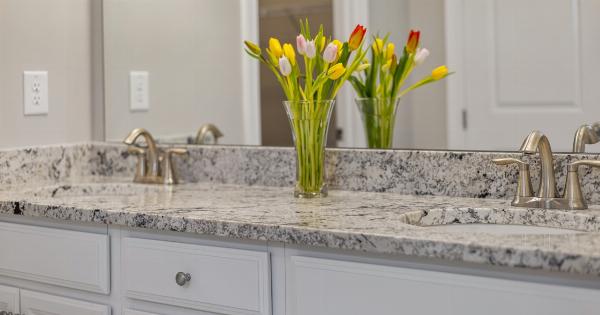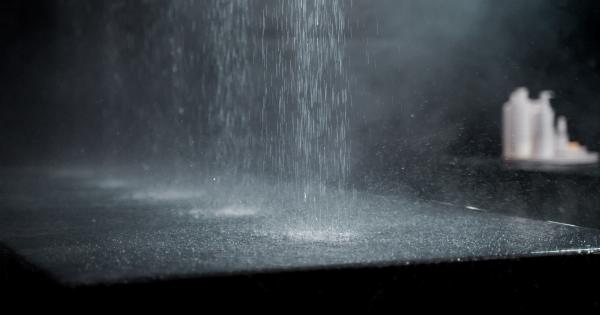When it comes to maintaining a clean and hygienic living space, the bathroom is an area that requires special attention. It is a common misconception that bathrooms are the most germ-ridden places in our homes.
However, the truth is that the bathroom can harbor numerous types of germs, bacteria, and viruses that can pose a threat to our health if left unchecked.
The Importance of Counting Germs in Your Bathroom
Counting the number of germs in your bathroom might sound like an odd and unnecessary task, but it can actually help you understand the level of cleanliness and hygiene in this space.
By being aware of the potential germs present, you can take appropriate measures to keep them under control and minimize the risk of infections or illnesses.
The Most Common Germs Found in Bathrooms
Before diving into the importance of counting germs, let’s explore some of the most common germs found in bathrooms:.
1. E.coli
E.coli is a type of bacteria that can be found in feces and can contaminate various surfaces in the bathroom. It can cause severe gastrointestinal issues if ingested.
2. Staphylococcus
Staphylococcus bacteria are commonly found on the skin and can thrive in moist areas like the bathroom. If they enter the body through cuts or wounds, they can cause skin infections.
3. Mold and Mildew
In damp and poorly ventilated bathrooms, mold and mildew can grow on surfaces such as tiles, shower curtains, and even on walls. These fungi can trigger allergies and respiratory problems.
4. Influenza Virus
The influenza virus can survive on various bathroom surfaces and can spread easily. It can cause flu-like symptoms, which can range from mild to severe.
Why Counting Germs is Important
Counting germs in your bathroom allows you to gauge the cleanliness of the space and take appropriate actions to maintain a hygienic environment. Here are a few reasons why counting germs is important:.
1. Identifying Hygiene Gaps
By counting germs, you can identify potential areas of concern in terms of cleanliness. This will help you take targeted actions to improve your cleaning routine and ensure a more hygienic bathroom environment.
2. Preventing Illnesses
Many germs in the bathroom can lead to illnesses. By knowing how many germs are present, you can take proactive steps to disinfect surfaces and minimize the risk of infections spreading to you or your family members.
3. Assessing Cleaning Effectiveness
Counting germs allows you to assess whether your cleaning efforts are effective or if you need to switch to more potent cleaning solutions or techniques.
Tracking germ counts over time can help you understand whether your cleaning methods are working or need adjustment.
How to Count Germs in Your Bathroom
Counting germs in your bathroom doesn’t require any specialized equipment or extensive training. Here’s a simple method you can follow:.
1. Prepare a Surface Sampling Kit
To count germs, you’ll need a surface sampling kit, which typically includes sterile swabs, petri dishes, and transport media. These can be purchased online or from a local laboratory supply store.
2. Choose the Sampling Area
Select a few different areas in your bathroom to sample, such as the toilet handle, faucet, doorknob, and showerhead. These are common touchpoints where germs can accumulate.
3. Collect Samples
Wear gloves and moisten a swab with sterile collection media. Rub the swab against the surfaces you have chosen for sampling, ensuring you cover a sufficient area. Place each swab in a separate petri dish.
4. Incubate the Petri Dishes
Seal the petri dishes and place them in an incubator at the appropriate temperature. Follow the instructions provided with your sampling kit for the precise incubation period and conditions required.
5. Analyze the Results
After the incubation period, observe the petri dishes. The presence of bacteria colonies will indicate the level of contamination in each sample. Count the colonies to get an estimate of the number of germs present.
Maintaining a Germ-Free Bathroom
Now that you have an idea of the number of germs in your bathroom, here are some steps you can take to maintain a germ-free environment:.
1. Regular Cleaning
Establish a regular cleaning routine for your bathroom, ensuring that all surfaces are thoroughly cleaned and disinfected. Pay extra attention to commonly touched areas and frequently clean items like toilet seats, faucets, and handles.
2. Use Effective Cleaning Products
Choose cleaning products that specifically target bacteria and viruses. Look for disinfectants that are approved by health and safety agencies. Be sure to follow the instructions on the product’s label for proper usage.
3. Promote Ventilation
A well-ventilated bathroom helps prevent the growth of mold and mildew. Open windows or use exhaust fans to improve air circulation and reduce moisture build-up.
4. Practice Good Personal Hygiene
Encourage good personal hygiene habits in your household, such as handwashing with soap and water for at least 20 seconds. Proper hand hygiene is crucial for preventing the spread of germs.
Conclusion
Counting germs in your bathroom might sound like a peculiar task, but it can provide valuable insights into the cleanliness and hygiene of your space.
Understanding the types and quantities of germs present allows you to take appropriate measures to maintain a germ-free environment. By implementing regular cleaning practices, using effective cleaning products, and promoting good personal hygiene, you can ensure that your bathroom remains a clean and healthy space for you and your family.































